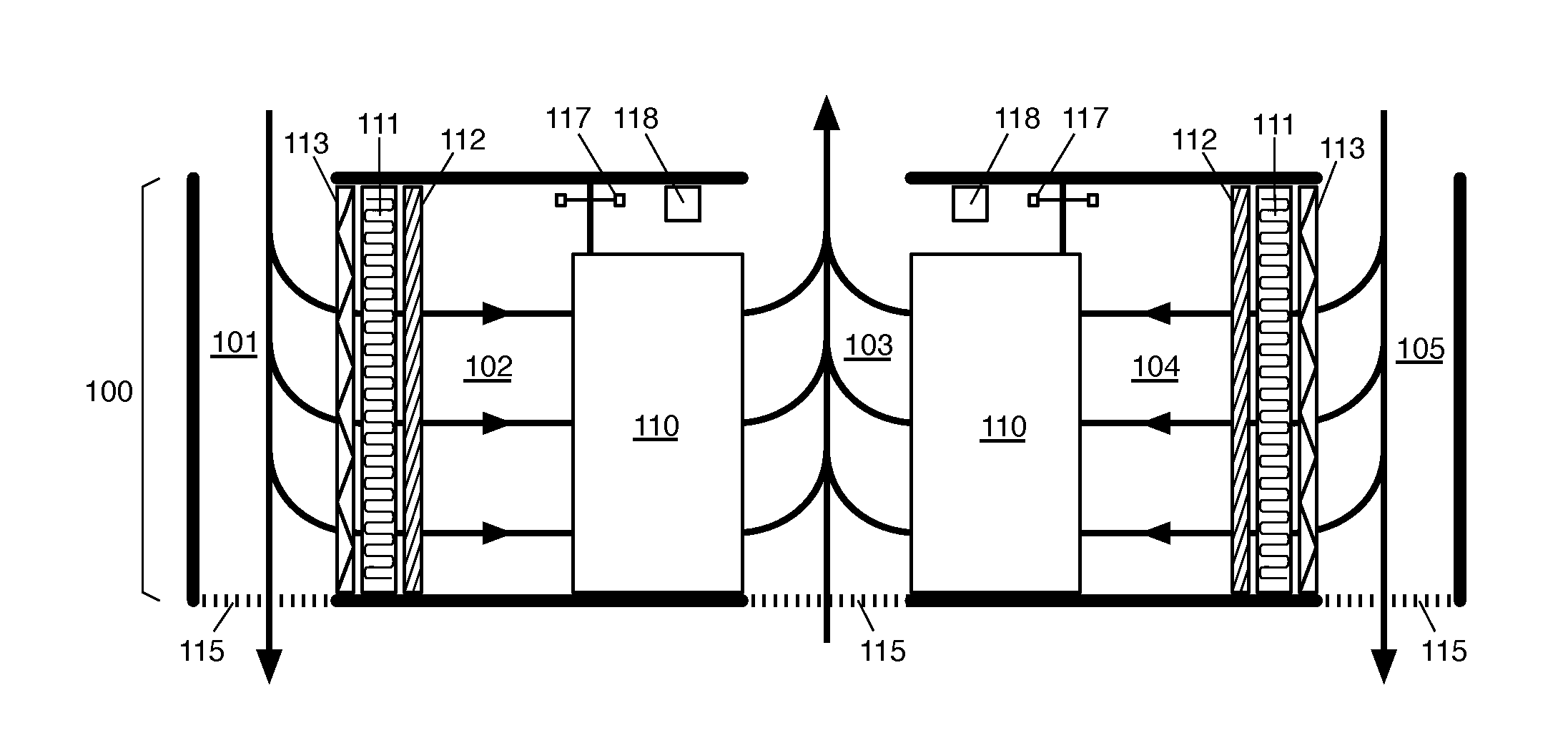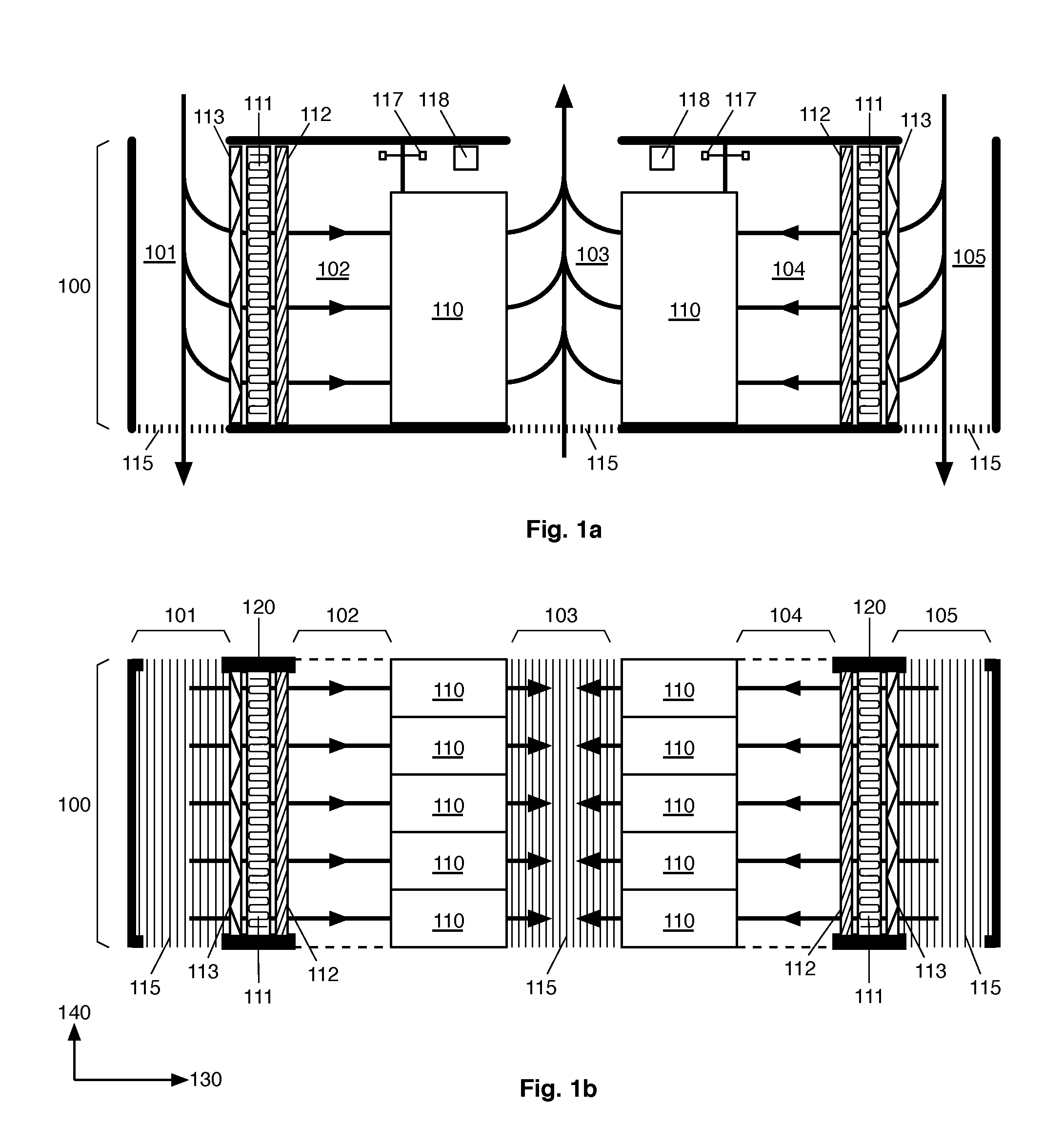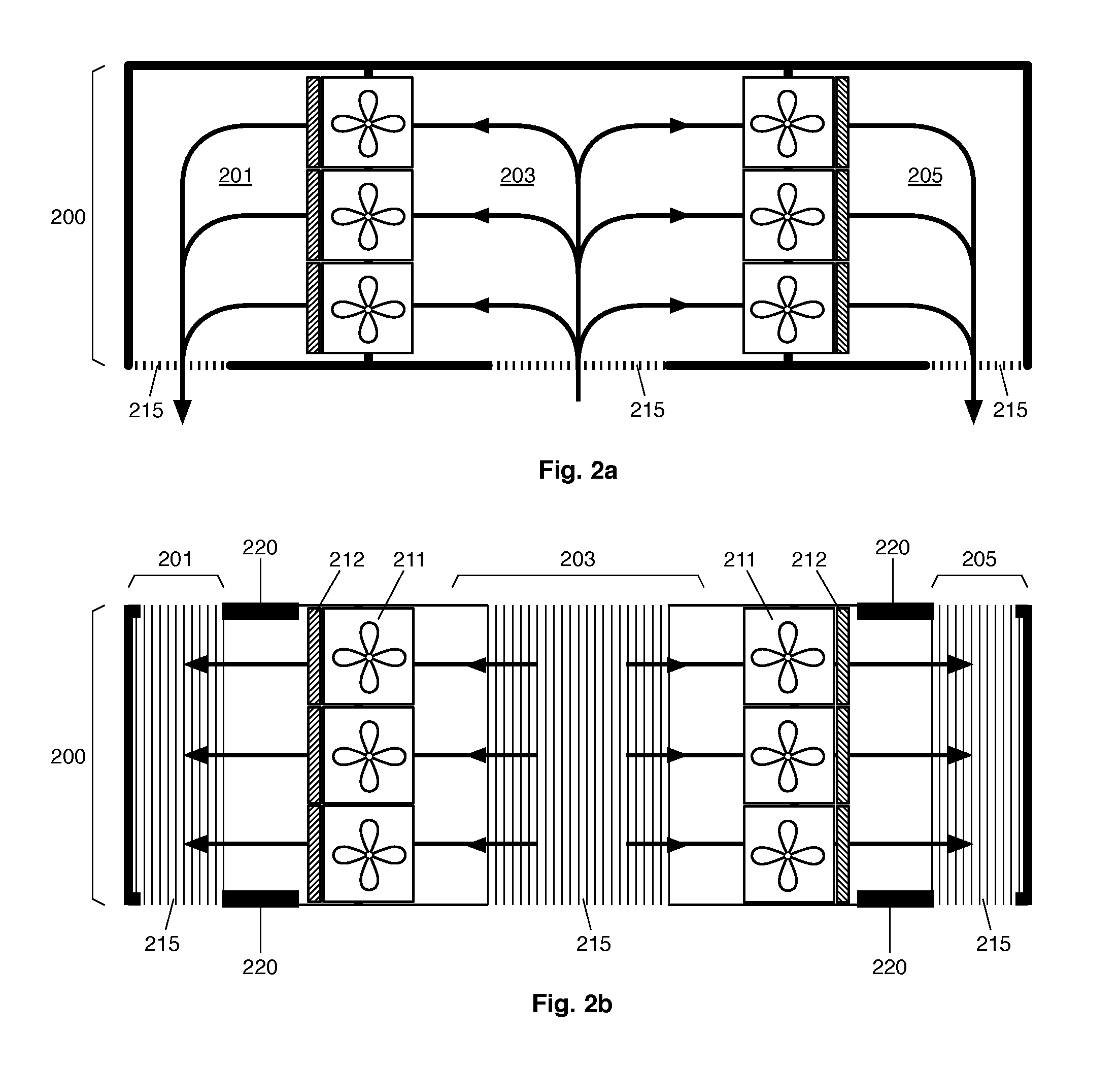Modular High-Rise Data Centers and Methods Thereof
- Summary
- Abstract
- Description
- Claims
- Application Information
AI Technical Summary
Benefits of technology
Problems solved by technology
Method used
Image
Examples
Embodiment Construction
[0037]A novel vertical data center modules and a method for their large-scale deployment to allow building of high-rise data centers will be described hereinafter. Although the invention is described in terms of specific illustrative embodiments, it is to be understood that the embodiments described herein are by way of example only and that the scope of the invention is not intended to be limited thereby.
[0038]Now referring to FIGS. 1a and 1b, an embodiment of a data center module 100 large enough to accommodate two rows of computing cabinets 110 is shown. More specifically, FIG. 1a is a side sectional view of the module, while FIG. 1B is a top-sectional view of the same module. The data center module 100 has a long axis 130 and a narrow axis 140. In such an embodiment, a plurality of rows of cabinets 110, typically two, are aligned along the narrow axis of the data center module. In the specific illustrated embodiment, the narrow axis of the data center module is about 10 feet wid...
PUM
 Login to View More
Login to View More Abstract
Description
Claims
Application Information
 Login to View More
Login to View More - R&D
- Intellectual Property
- Life Sciences
- Materials
- Tech Scout
- Unparalleled Data Quality
- Higher Quality Content
- 60% Fewer Hallucinations
Browse by: Latest US Patents, China's latest patents, Technical Efficacy Thesaurus, Application Domain, Technology Topic, Popular Technical Reports.
© 2025 PatSnap. All rights reserved.Legal|Privacy policy|Modern Slavery Act Transparency Statement|Sitemap|About US| Contact US: help@patsnap.com



